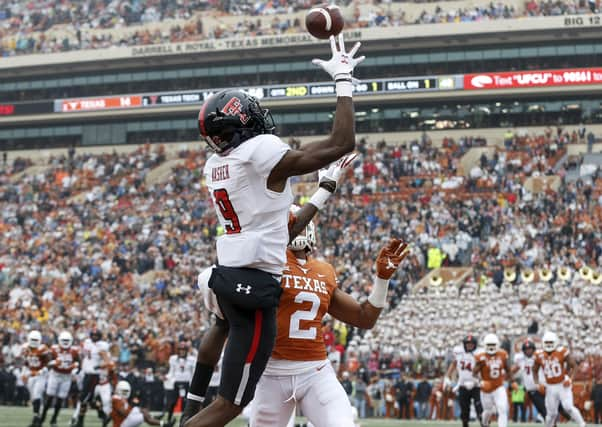Are US colleges too eager to cash in on football after coronavirus?


During the long autumn months and into the depths of winter, the US sports landscape is dominated by football. Not our football obviously, but that padded-up, smashing and crashing version of rugby, and it’s a lot of fun to watch.
The sporting weekend from late August to late January is divided up into Friday nights for high school, Saturdays for college and Sunday for the NFL, a system that sees everybody get their moment. But this year it could look decidedly different.
Advertisement
Hide AdAdvertisement
Hide AdThe world is slowly reopening, and this is the same for football too. The NFL has allowed staff back into facilities, and the National Collegiate Athletic Association ruled last week that college sports could reopen as and when they decide, within state guidelines, much to the relief of many fans.
With a little under 100 days to go before the college football season starts, the prospect of cheering on their Alma Mater is still there for August, although it may look a little different.
To understand college athletics in North America you have to abandon any idea of the Edinburgh Universities playing football on a windy open field next to Napier’s Sighthill campus and think more of Bryant-Denny Stadium in Alabama with 101,000 people. It’s a world away from the UK.
But even with its still hoped for return, the landscape could look very different for college football.
The revenues involved in this amateur sport are in the region of $4 billion a year, and that money doesn’t just go to football. To be considered in the top band of college sports, you have to be recognised by the NCAA as a Division I school. The school is required to adhere to lots of rules about recruitment and scholarships, and most importantly you must field teams in at least seven sports for men and seven for women or six for men and eight for women.
These rules are where the importance of football becomes significant. None of the other sports generates revenue at anywhere near the level of football. Basketball would be considered the next highest generator, but you only get 12,000 seats in the average arena.
The impact of Covid-19 has already been felt across the college sports landscape with many colleges tightening their belts, and last week institutions started cutting programs. On the list of programs cut were track and field, soccer, baseball, wrestling and lacrosse – all sports which need the cross-funding from the football crowds to compete across the country.
In 2017-18, all of the top 130 Athletic Departments generated over half of their revenues from football, according to financial reports, and when ticket sales are removed, only two schools, Georgia and Texas Tech, have sustainable departments.
Advertisement
Hide AdAdvertisement
Hide AdTicket revenues in that season accounted for an average of $18.6 million while other attendance-related incomes (merchandise, food and drink) drove that number up to $62m a season.
It’s not just the football fans who need the season to go ahead.
College football is the bedrock that nearly all college sports is built on, and some young students have planned on playing for a particular university since they were children. They are now scrambling to gain scholarships at other schools, all without knowing if the academic year will happen.
College sports was one of the first to respond to the pandemic when teams pulled out of the March Madness basketball tournament, with player safety at the crux of the much-applauded decision. Yet here we are less than 12 weeks later with college management hypocritically making decisions about sports before they’ve considered the impact on student safety, let alone the safety of the fans.
This is different from the NFL. Those players are signed to a contract that leaves them in a position where they can choose not to play, and not get paid. College athletes are at the behest of the coaches and schools who can quickly remove their scholarships, pulling their futures from under them.
Its time the college management stood up and said what we all want to hear: “We are putting the children first, there will be no sports until we can make it safe”. Which, ironically, would be the same approach they’ve taken with academics.
A message from the Editor:
Thank you for reading this story on our website. While I have your attention, I also have an important request to make of you.
With the coronavirus lockdown having a major impact on many of our advertisers - and consequently the revenue we receive - we are more reliant than ever on you taking out a digital subscription.
Advertisement
Hide AdAdvertisement
Hide AdSubscribe to scotsman.com and enjoy unlimited access to Scottish news and information online and on our app. With a digital subscription, you can read more than 5 articles, see fewer ads, enjoy faster load times, and get access to exclusive newsletters and content. Visit https://www.scotsman.com/subscriptions now to sign up.
Our journalism costs money and we rely on advertising, print and digital revenues to help to support them. By supporting us, we are able to support you in providing trusted, fact-checked content for this website.
Joy Yates
Editorial Director
Comments
Want to join the conversation? Please or to comment on this article.